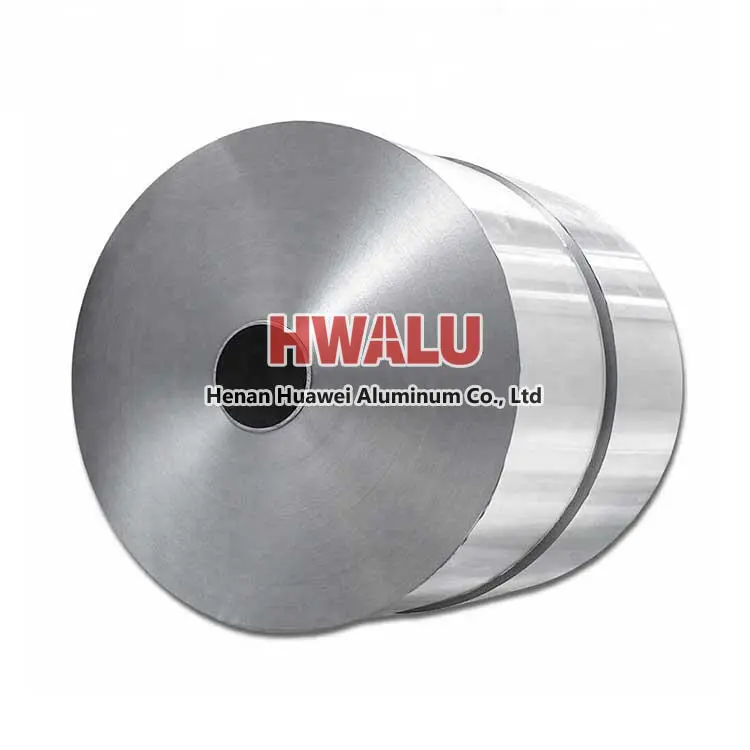Single zero aluminum foil refers to aluminum foil with a thickness between 0.01mm ( 10 micron ) and 0.1mm ( 100 micron ). 0.01mm ( 10 micron ), 0.011mm ( 11 micron ), 0.012mm ( 12 micron ), 0.13mm ( 13 micron ), 0.14mm ( 14 micron ), 0.15mm ( 15 micron ), 0.16mm ( 16 micron ), 0.17mm ( 17 micron ), 0.18mm ( 18 micron ), 0.19mm ( 19 micron ) 0.02mm ( 20 micron ), 0.021mm ( 21 micron ), 0.022mm ( 22 micron ...
Industrial Aluminum Foil Insulation Roll Foil insulation creates a radiant barrier against heat from the sun. It is vital that foil insulation is installed correctly because without an air space on one side of the reflective foil, the product will have no insulating capabilities. Industrial Aluminum Foil Insulation Roll advantages Industrial aluminum foil insulation rolls are commonly used in the power ind ...
What is a lidding foil? Lidding foil, also known as lid foil or lid, is a thin sheet of aluminum or composite material used to seal containers such as cups, jars, and trays to protect the contents inside. Lidding foils come in a variety of shapes, sizes, and designs to suit different types of containers and packaging applications. They can be printed with branding, logos, and product information to enhance a ...
what is 8021 alloy aluminum foil? 8021 alloy aluminum foil has excellent moisture resistance, shading, and extremely high barrier ability: elongation, puncture resistance, and strong sealing performance. The aluminum foil after compounding, printing, and gluing is widely used as a packaging material. Mainly used for food packaging, blister drug packaging, soft battery packs, etc. The Advantages Of 8021 a ...
How to define light gauge aluminum foil? Light gauge aluminum foil usually refers to aluminum foil with a thickness of less than 0.01mm, that is, aluminum foil with a thickness of 0.0045mm~0.0075mm. 1mic=0.001mm Example: 6 mic aluminum foil, 5.3 mic aluminum foil Aluminum foil with thickness ≤40ltm can also be called "light gauge foil", and aluminum foil with thickness >40btm can be called "heavy gau ...
What is aluminum foil for transformers Aluminum foil for transformers refers to the aluminum foil used to make transformers. A transformer is an electrical device used to transform alternating voltage or current, consisting of an iron core and a winding. A winding consists of an insulated coil and a conductor, usually copper wire or foil. Aluminum foil can also be used as a winding conductor. Aluminum foil fo ...
1.Convenience: Large rolls of aluminum foil can be cut at any time, convenient for packaging food of various shapes and sizes, very flexible. 2.Freshness preservation: Aluminum foil can effectively isolate air and moisture, prevent food from going bad, and prolong the freshness period of food. 3.Durability: Aluminum foil has excellent heat resistance and tear resistance, can withstand high temperature and p ...
In the production process of aluminum foil, there are multiple processes such as rolling, finishing, annealing, packaging, etc. The interlocking production process, any problem in any link may cause aluminum foil quality problems. The quality defects of the purchased aluminum foil products will not only affect the appearance, but also directly affect the quality of the products produced, and even more directly ca ...
Cast-rolled aluminum foil production process Aluminum liquid, aluminum ingot -> Smelt -> Continuous roll casting -> Winding -> Cast roll finished product Plain foil production process Plain foil -> Cast-rolled coil -> Cold rolled -> Foil rolling -> Slitting -> Annealing -> Plain foil finished product The manufacture of aluminum foil is similar to making pasta at home. A large b ...
Coiling defects mainly refer to loose, layer channeling, tower shape, warping and so on. Aluminum foil roll during the winding process. Because the tension of aluminum foil is limited, enough tension is the condition to form a certain tension gradient. Therefore, the winding quality ultimately depends on good shape, reasonable process parameters and suitable precision sleeve. It is ideal to obtain tight coils ...
The development of new energy vehicles is an important part of the low-carbon economy, and plays an important role in alleviating the contradiction between energy supply and demand, improving the environment, and promoting sustainable economic development. New energy vehicles are one of the industries that best reflect a country's technological development level, independent innovation capabilities and internatio ...
Degreasing pollution is mainly manifested on the surface of the aluminum foil in 0 state. After the aluminum foil is annealed, it is tested by the water brushing method, and it does not reach the level specified in the water brushing test. The aluminum foil that requires the water-washing test is mainly used for printing, composite with other materials, etc. Therefore, the surface of the aluminum foil must be ...







